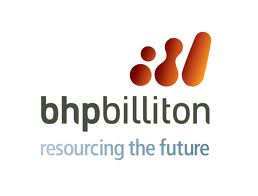 BHP Billiton President Iron Ore, Jimmy Wilson, today announced plans to cut unit costs at Western Australia Iron Ore (WAIO) by at least 25 per cent and the potential to increase capacity there by 65 million tonnes per year at a very low capital cost.
BHP Billiton President Iron Ore, Jimmy Wilson, today announced plans to cut unit costs at Western Australia Iron Ore (WAIO) by at least 25 per cent and the potential to increase capacity there by 65 million tonnes per year at a very low capital cost.
Mr Wilson outlined BHP Billiton’s view of the long-term supply and demand trends in the iron ore market.
“We continue to see healthy demand growth for iron ore in the mid-term as Chinese steel production is expected to increase by approximately 25 per cent to between 1.0 and 1.1 billion tonnes in the early to mid-2020s,” he said.
“Meanwhile, steel production growth in other emerging economies is outpacing China as those nations urbanise and industrialise. We expect to see a compound annual growth rate for global steel production of between 2.5 and 3.0 per cent between now and 2030.
“Unsurprisingly, high prices over the last decade created the incentives needed for new entrants to join the market and traditional producers to substantially increase supply. As a result, growth in seaborne supply is expected to exceed growth in demand over the short to medium term.
“In anticipation of this transition, we turned our focus from major supply chain investment to productivity, cost reduction and capital efficient growth more than two years ago.”
Mr Wilson highlighted the quality and footprint of the WAIO operations which consist of the four main joint ventures Mt Newman, Yandi, Mt Goldsworthy and Jimblebar.
“We have the strongest resource position in Western Australia and the quality of our ore bodies will help us sustain strong margins over the long term. We have already significantly cut the cost of production at WAIO and plan to go further,” he said.
“We expect unit cash costs1 of less than US$20 per tonne2 in the medium term, a reduction of more than 25 per cent on the average achieved in the 2014 financial year.
“Our reserves are concentrated around our four major mining hubs which will support a lower level of sustaining capital expenditure than required by our peers. With annual sustaining capex of approximately US$5 per tonne over the next five years, we aim to be the lowest cost supplier to China on an all-in cash basis.”
Mr Wilson also said BHP Billiton could add 65 million tonnes of capacity at WAIO at a capital intensity of approximately US$30 per annual tonne, taking total system capacity from 225 Mtpa to 290 Mtpa by the end of the 2017 financial year.
“The economics of further increasing our production are compelling. We completed our major supply chain investments some time ago and have since focussed on using BHP Billiton’s benchmarking systems to improve the performance of our equipment by systematically tackling the bottlenecks,” he said.
“We now expect to increase WAIO mine capacity to 275 Mtpa without the need for additional fixed plant investment. Beyond that, the Inner Harbour Debottlenecking and Jimblebar Phase 2 projects3 will help us to reach 290 Mtpa of supply chain capacity at low capital cost.”
